Categories: Featured Articles » Interesting Facts
Number of views: 64082
Comments on the article: 5
Why Thomas Edison is considered the inventor of incandescent lamps
Additions and comments to the article: Who actually invented the light bulb
The history of incandescent lamps. Why Thomas Edison?
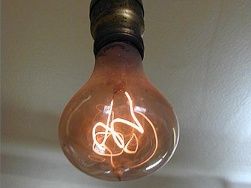 In the second half of the 1870s, the idea of electric lighting using conductors heated by electric current was not new. Many scientists, engineers and inventors worked (conducted research and experiments) in this direction, because they clearly saw great prospects for the practical use of electric incandescent lamps. And it is not surprising therefore that in many countries there were inventors of the first incandescent lamp: in the UK - Svan, in Russia - Lodygin, in Germany - Goebel, in the USA - Edison. There were other names, some of which I mentioned in my posts about a light bulb.
In the second half of the 1870s, the idea of electric lighting using conductors heated by electric current was not new. Many scientists, engineers and inventors worked (conducted research and experiments) in this direction, because they clearly saw great prospects for the practical use of electric incandescent lamps. And it is not surprising therefore that in many countries there were inventors of the first incandescent lamp: in the UK - Svan, in Russia - Lodygin, in Germany - Goebel, in the USA - Edison. There were other names, some of which I mentioned in my posts about a light bulb.
So why, then, in the public consciousness of almost all of mankind, there was a firm belief that it was Thomas Edison who invented the incandescent lamp?
This is all the more surprising and incomprehensible, given that in America itself, already in the early 1880s, there were several inventors, as well as companies representing them, striving to occupy a leading position in the still emerging and very promising electric lighting market. I repeat - it is in the lighting market, not light bulbs.
At that time, centralized electrical networks did not exist, and bulbs themselves were not needed. Therefore, usually, a comprehensive solution to the problem of lighting a building (for example, a large store) or a complex of buildings was proposed, which (solution) included almost all equipment and materials, from electric generators to incandescent bulbs. But there was still practically no connecting electrical fittings, all the elements of which still had to be invented and production organized. I'm not talking about all sorts of norms, standards, rules of operation and safety, etc. etc., which also did not exist yet.
Here's a curious document - a short article published in the journal Popular Science May 1881 p.24. This is the announcement of the book Electric Lighting by Incandescence published in New York in 1881, by William Sawyer, who was himself one of the pioneers in the development of incandescent lamps.

A little over a year has passed since Thomas Edison held the first public demonstration of electric lighting on January 1, 1880 in Menlo Park (USA), and a book is already being published (you can even say a monograph), where, besides the story of his achievements in In this area, the author gives an overview of the world state of this area of electrical engineering. The appearance of this book, among other things, indicates that in the United States in the late 1870s, not only Edison worked on an incandescent lamp, but also at least one other researcher, William Sawyer. For lack of the book itself, I will quote and comment on some fragments from its announcement, because they are very curious.
In these chapters Mr. Sawyer has given a resume of the present condition of electric lighting by incandescence, describing the chief apparatus that has been so far devised. He begins his exposition with a consideration of the various electric generators, as these necessarily are at the foundation of any system of electric lighting. Of these the two important classes are those of the Gramme type, in which he includes those of Maxim and Brush; and those of the new Siemens type, in which he places his own and Edison's. The Wilde, De Meritens, and Lontin machines are also described, the first being characterized as the "germ of a perfect generator," in that in the intensity of the magnetic field is uninfluenced by the resistance of the external circuit, and a larger part of the entire current can therefore be used than in accumulative machines.
In these chapters, Mr. Sawyer reviewed the current state of incandescent electric lighting, describing the main devices that have been developed so far. He begins his presentation by examining various electric generators, since they are always at the heart of any electric lighting system. At that time, there were two main types of generators: the so-called Gramme type, which included the apparatus of Maxim and Brush, and the new Siemens type, to which the author of the book (William Sawyer) refers his generators and Edison.Wide, De Meritens, and Lontin machines are also described, the first of which is characterized as the "nucleus of a perfect generator."
It is not difficult to notice that by 1881 there were already several proposals for generators that could be used for electric lighting. And what are the famous names, even for a modern person, names: Siemens, Maxim, Edison. The review of incandescent lamps includes those of Starr and King, Lodyguine, Konn, and Kosloff, Bouliguine, Fontaine, Farmer, Sawyer, Edison, and Maxim, in which the carbon is protected from the atmosphere, and those of Reynier and Werdermann, in which it burns in the air. Of the former, only the last three are considered as practicable lamps, and these the Maxim is considered as, in all essential particulars, a duplication of that of Edison.
A review of incandescent lamps includes Starr and King, Lodyguine, Kona and Kozlov, Bouliguine, Fontaine, Farmer, Sawyer, Edison, and Maxim lamps, in which carbon is protected from the atmosphere, and those in which it burns in the air - Rainier (Reynier) and Werdermann. Of the first, only the last three are considered practical lamps, and Maxim's lamps in all essential respects duplicate Edison.
Very interesting and curious. Firstly, the Russian trace in electric lighting using incandescent lamps is significant (Lodyguine, Konn, Kosloff, Bouliguine), in 1881 it is not disputed by anyone and is even recognized by the Americans. And secondly, a year after the demonstration of Edison’s invention, in the USA there are at least two more incandescent lamps: Sawyer and Maxim.
With regard to the duration of the carbon, Mr. Sawyer holds that the hope of making it permanent is chimerical, as no material will stand the strain to which an incandescent conductor is completed, and that the part of wisdom, therefore, is to provide for its renewal.
Regarding the longevity of carbon, Mr. Sawyer argues that the hope of making it permanent is unrealizable (chimerical), since no material can withstand the stress that the incandescent conductor is exposed to, and that part of the wisdom will thus ensure its recovery (replacement).
I don’t know what was meant by renewal in this case, but I venture to suggest that due to the fragility of carbon filaments and the high cost of the lamps, wisdom consisted in making the incandescent element replaceable (replaceable), and the lamps themselves reusable. This approach by that time was not new - it is enough to recall the Russian lamps of Kon-Didrichson and Bulygin. And although in the future this direction was not developed, at the stage of formation of electric lighting, such lamps turned out to be in demand.
The following is a graphic showing the evolution of Sawyer and Maine incandescent light bulbs based on their patent analysis. It is worth paying attention to the fact that the filing date and the date of issue of the first patent No. 205144 (application filed May 16, 1878, patent granted June 18, 1878) are earlier than Edison's first patent for a light bulb (No. 223898 of 27 January 1890). Sawyer and Maine patents played an important role in the 1880s - 1890s, as they were an alternative to Edison’s patents, and since 1886 they produced the Thomson-Houston Electric Company bulbs, and after 1892, George Westinghouse’s company until the expiration of Edison’s patents in 1897.

Evolution of an incandescent lamp by Sawyer and Maine (William Edward Sawyer and Albon Man) Drawings from US Patents Nos. 205144, 219771, 317676.
As for the cost of lighting with incandescent lamps, it is concluded that it amounts to no more than one seventh of gas lighting with an equal amount of light, while the cost of a plant, repair, etc., will be much less. Regarding the future of such lighting, and its relationship with other types of lighting, Mr. Sawyer speaks as follows:
"The use of electricity in public and private lighting will be realized in the near future, and this is beyond doubt. It seems unbelievable that electricity can ever completely replace gas, however, it does not surprise anyone that luminous gas can significantly affect consumption There is a room, and undoubtedly it will continue to be the place for all artificial lighting methods for many years to come, but we will witness the increasing use of elec for electricity - public buildings and private houses, streets and squares will be better lit than at present, and the new form of light keeps pace with the progress of old and tried and tested institutions. "
In this passage, an interesting assessment of the cost of electric lighting compared to gas, and an optimistic, but restrained forecast for its development.It is rightly pointed out that for a long time, electric lighting will coexist with other types of artificial lighting, constantly, however, gaining more and more popularity. Cautious optimism can be explained by Sawyer's understanding of the amount of work that needs to be done for the widespread use of electricity in lighting.
The Smithsonian's National Museum of American History has a very interesting section on the history of electric lighting on its website. Below, I will outline part of the American history of incandescent lamps, based mainly on the materials of this site.
Edison was neither the first nor the only person trying to invent an incandescent electric lamp. In the U.S., Moses Farmer, William Sawyer and Albon Man, and Hiram Maxim were all pursuing the goal, as were St. George Lane-Fox and Joseph Swan in England.
Edison was neither the first nor the only person to try to invent an electric incandescent lamp. In the United States, Moses Farmer, William Sawyer and Albon Man, and Hiram Maxim achieved this goal, as did St. George Lane-Fox and Joseph Swan in England.
Here again is mentioned the name of the British inventor and gunsmith of American origin Hiram Stevens Maxim (born February 5, 1840 - November 24, 1916), who also played an important role in the development of electric lighting. Maxim, together with Williamson et al., Back in 1877 founded the United States Electric Lighting Company, a company engaged in electric lighting, however, mainly using arc lamps. After the appearance of Edison's lamps in 1880, Maxim quickly rebuilt, and already in 1881 he successfully demonstrated several models at an exhibition in Paris dynamo cars and their incandescent bulbs.
One of the reasons Maxim was able to present his new product so quickly was because he hired Ludwig Boehm, the glassblower Edison from Menlo Park, in early 1880. He could not avoid patent disputes with Edison, but the lamps turned out to be very successful and were produced for several years, even after Maxim moved to England in 1881 and practically stopped working on electricity, focusing on his main invention - the machine gun.
I must say that Hiram Maxim and The United States Electric Lighting Company also offered a complete solution for electric lighting, i.e. they had all the necessary equipment, from electric generators to light bulbs. In the production of incandescent lamps, the entire technological process was completely developed for them.
In addition to the design features of the lamps themselves, the process of producing carbon filaments, a method for evacuating lamps, improvements in current generators and even a candelabra (chandelier) for new light sources are also patented. Below are drawings of Hiram Maxim lamps taken from his patents.

Hiram Maxim patents for electric bulbs
William Sawyer Companies - The Sawyer & Man Electric Co. and Hiram Maxim - The United States Electric Lighting Company did not last long. After a stormy initial stage in the development of electric lighting in the first half of the 1880s, when many players rushed to this market segment, a series of mergers and acquisitions began, and as often happens, even the founders fell under the onslaught of more successful competitors.
Some of the lucky competitors were professors Elihu Thomson and Edwin Houston, who began experimenting with improvements to existing arc lamps and dynamos in the late 1870s. In 1880, after a group of businessmen from New Britain approached them, Thomson and Houston agreed to form a company that began to commercialize lighting systems (both arc and incandescent lamps), based on their own patents.
It was The American Electric Company, which lasted until 1883, when it was reorganized and renamed The Thomson-Houston Electric Company. Sales of arc-based lighting systems were highly successful, and The Sawyer & Man Electric Co. was acquired in 1886 to diversify its business into other segments of the electric market. and started the production of incandescent lamps based on their patents.
Hiram Maxim's company, The United States Electric Lighting Company, was bought by another well-known inventor and highly successful businessman, George Westinghouse, in 1888.
Thus, by 1890, as a result of all these mergers and acquisitions, Edison, Thomson-Houston and Westinghouse formed the so-called Big Three "Big 3" of the American lighting industry. However, the mergers did not end there. In 1892, the famous American banker and financier John Pierpont Morgan initiated the merger of the Edison General Electric Company and the Thomson-Houston Electric Company, resulting in the formation of the famous General Electric company.
The disappearance of the name of Edison from the name of the company, at the origins of which he stood, is very symbolic. By that time, Thomas Edison had clearly lost to Westinghouse the argument (fight) about which current, constant or variable, should be used for lighting (and not only).
As you know, Edison was a supporter of direct current, however, by the end of the 1880s, it became clear that there were practically no prospects for this type of current, in the case of its wide industrial production and transmission over long distances. Edison continued with great stubbornness to promote his direct current systems, although two young geniuses worked for him for some time: 28-year-old Nikola Tesla and 22-year-old Mikhail Dolivo-Dobrovolsky - adherents of alternating current and future inventors of two-phase and three-phase AC motors, respectively current.
Not having achieved mutual understanding with Edison, Dolivo-Dobrovolsky moved to Germany to Siemens, and Tesla in 1888 ran to his main rival - Westinghouse. In the same year, an alternating current electric meter was invented in the laboratory of Westinghouse, after which the outcome of the fight became a foregone conclusion.
All this struggle between AC and DC supporters is very interesting in itself and deserves a separate description, but fortunately, others did it before me. You can read more about this, for example, in the article On Edison and Black PR published in the journal Science and Life, N 7, 2001.
There is still a very curious moment in this confrontation. American patents of Lodygin No. 494149, 494150 and 494151 were registered on March 28, 1893, but applications for them were filed on September 14, 1888, i.e. during the period of the highest intensity of the struggle between supporters of constant and alternating currents. If you look at the title in the description of these patents, you can read the following: ALEXANDRE DE LODYGUINE, OF PARIS, FRANCE, ASSIGNOR, BY MESNE ASSIGNMENTS, TO THE WESTINGHOUSE ELECTRIC AND MANUFACTURING COMPANY, OF PITTSBURG, PENNSYLVANIA.
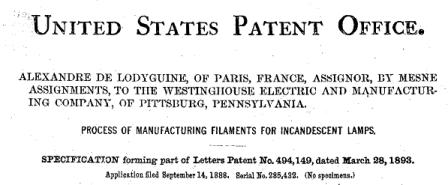
I think this should be understood so that during these years Lodygin worked for Westinghouse Electric, or (and) transferred all rights to these patents to the company. In connection with this fact, the negative answer to the question “Alexander de Lodyguine vs. Thomas Edison - Was there a confrontation? ” from the previous post, it does not look so obvious. The confrontation was, but not Lodyguine vs. Edison, and AC vs. DC, where Lodygin played on the AC (Alternating Current) team, along with other outstanding electrical engineers of the time, against the DC (Direct Current) team, led by Thomas Edison.
What turns out:
* Incandescent lamp was not invented by Edison;
* He was not the first in the practical application and production of these lamps, although he was the first to make this production mass;
* Edison lost the battle with the main competitor for the promotion of his lighting system before starting its mass application;
* General Electric introduced a tungsten filament without the participation of the great inventor.
And, nevertheless, almost the whole world calls a simple incandescent lamp exactly the bulb of Edison, and not Svan, Lodygin, Maxim, ..., and not even Ilyich’s bulb. Why?
Why Thomas Edison?
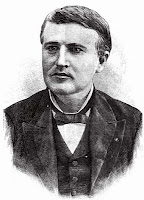 There are many answers to this question. On the one hand, Thomas Edison is a well-known and significant personality in the history of modern civilization, and on the other, the light bulb itself played an important role in the formation of this same civilization. Therefore, many have tried to explain this phenomenon (answer this question). In his first message about the light bulb, I did this, perhaps not very original, but I think - right.
There are many answers to this question. On the one hand, Thomas Edison is a well-known and significant personality in the history of modern civilization, and on the other, the light bulb itself played an important role in the formation of this same civilization. Therefore, many have tried to explain this phenomenon (answer this question). In his first message about the light bulb, I did this, perhaps not very original, but I think - right.
But the merit of Edison, primarily in the fact that he invented and created a supersystem for this lamp and put its production on stream, which led to a significant reduction in cost.He came up with a screw base for the lamp and a cartridge for it, invented fuses, switches, the first energy meter. It was with Edison’s light bulb that electric lighting became really massive, coming to the homes of ordinary people.
Bulk production of light bulbs is undoubtedly Edison’s greatest achievement. Initially selling his lamps below cost at a price of 1 dollar 25 cents, he succeeded, by introducing mechanization in production processes, to reduce costs so much that after three years selling them at 22 cents apiece, each lamp brought a profit of three cents, and new income offset all previous losses.
The screw base for light bulbs invented by Edison (the so-called Edison Base or E27) is still one of the generally accepted world standards. All other equipment and accessories needed were also developed by the Edison team, as practically none of this existed before. Here are some of the components from the electric lighting system that Edison came up with.

Edison Power Generator.
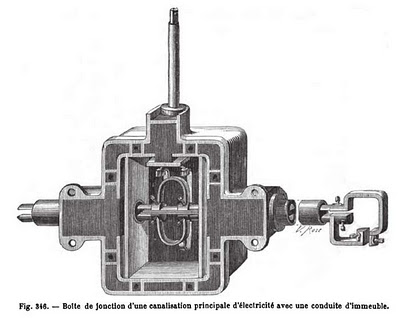
Junction box.
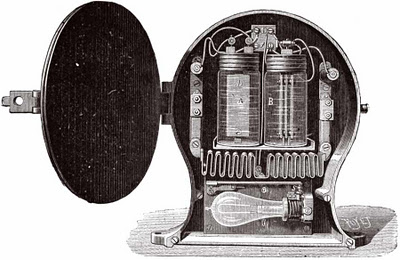
Electrochemical meter of electrical energy.
Another answer to the question Why Edison? can be found in the book "Edison" from the series Life of remarkable people (Volume 15), author - Mikhail Yakovich Lapirov-Skoblo, publishing house Young Guard, 1960. The first edition of this book was published in 1935.
The 1929 British Encyclopedia, in an article on lighting, emphasized that it was not Edison who was the first inventor of the incandescent lamp. The article names A.N. Lodygin (Russia, 1872) and Joseph Swan (England, 1877) as the first inventors of an incandescent lamp. Edison's greatest merit was that he was the first to create a practically feasible, and therefore widespread, electric lighting system with incandescent lamps with a strong, high-resistance filament, with a high and stable vacuum, and with the possibility of applying electric current to a huge number of independent friend and from the distance of the lighting points.
Another interesting answer to the question “Why Thomas Edison?” can be found in the article "Essay on the Development of Incandescent Lamps" from the encyclopedia "Industry and Technology", published at the beginning of the 20th century, and which is a Russian translation of the corresponding German publication. The third volume of this encyclopedia contains this essay, which is a reflection of, so to speak, the European (or rather, German) view of the history of incandescent lamps. Below I will quote the most interesting fragments from this essay, which relate specifically to the role of Edison in the history of the creation and implementation of an incandescent lamp.
Essay on the development of incandescent lamps: “It should be noted, however, that incandescent lamps could only develop slowly, even if the studies started continued. For their growth, there was no source of life for any inventions - confidence in practical applicability and benefits. So far, only galvanic cells were available, with incandescent lamps, like and arc lamps, it was possible to use only for scientific demonstration or, in exceptional cases, in the form of a curiosity.
With the invention and distribution of dynamos, inventors received a new impetus to improve incandescent lighting for practical use, with the task of crushing electric light in the first place, which forced electricians to set off on the old road to achieve the desired goal.
In 1873, the Russian inventor Lodygin tried to arrange incandescent lamps, and two of our compatriots Conn and Bulygin joined him for these studies.
All these studies, however, did not lead to new practical results. However, they proved that coal is the most suitable substance for incandescent, and the use of this substance naturally led to the fact that the incandescent body was placed in an airless space to eliminate burnout.This is the main feature of modern incandescent lamps, and therefore the described work of the inventors should be recognized as being of primary importance. It was followed by the adaptation of incandescent lamps for practical use.
This final work should not be set too low; we just have to admit that incandescent lighting was invented long ago and thanks to previous inventions it began to spread rapidly from the end of the seventies. Now let us briefly consider how this second part of the invention developed - the adaptation of incandescent lamps for practical use.
In the late seventies, this business was undertaken from several sides in America and England. It gained great popularity and the rumor that someone seeks to achieve the crushing of electric light through incandescent lighting, prompted the second researcher, the third, etc. to do the same.
Since the incandescent body should have a relatively small cross section, the question arose of how to obtain such a conductor from coal; there was nothing to think of cutting it out of retort coal, this fragile and fragile material. A simple way to prepare such coal conductors was found by two American electrical engineers, Sawyer and Man. They cut out small arcs from paperboard and carbonized them in an oven in graphite powder. This was at the beginning of 1878.
In the fall of 1879, Thomas Edison unexpectedly advanced in this field of inventions and completed the practical development of an incandescent lamp. Until this time, Edison adhered to metal wires as an incandescent body, but when he saw the results of Sawyer and Mans inventions, he stepped on the right road and, thanks to his outstanding technical genius, which he possesses along with inventive talent, he managed to bring a lamp in a few weeks Incandescent in full suitability for practical use.
First, he replaced the fragile paper corner with the best one made from charred bamboo fibers, and at the same time he found that the incandescent body should be given as much resistance as possible, so that by raising the voltage of this body, it would reduce the amperage required for incandescent.
In the same year, Edison was able to arrange the first practical installation of incandescent lighting (namely, on the Columbia steamer with 115 incandescent lamps), and after that similar installations began to spread rapidly.
It is regrettable that Edison's undoubtedly important participation in the practical development of incandescent lamps is used for obscene advertising, exposing him as the inventor of this lamp. Even before Edison began his inventive work, his companions disclosed that he was working on an invention that would soon supersede gas lighting; by this they achieved the desired, namely, a rapid drop in the price of shares of gas companies. This was often repeated with further Edison inventions (we just need to recall the exaggerated phonograph advertisements a few years ago) and probably not to the benefit of Edison, for whom these advertisers are undermining his fame.
In Europe, they began to be interested in incandescent lamps from 1880, and only became acquainted with them when Edison proved in practice their advantages at the Electric Exhibition in Paris (in 1881). Since that time, incandescent lighting began to spread rapidly. "Industry and Technology Encyclopedia of Industrial Knowledge Volume 3. Electricity. St. Petersburg. 1904
What language, what style! Nice to read. But besides style, the essay can be perceived as a practical guide to invention, where the fundamental truth is immediately given out, which for many of our modern inventors is unattainable for understanding, and should be perceived as a divine revelation.
The source of life for all inventions is confidence in practical applicability and profit.So “adaptation of incandescent lamps (as well as any other inventions) to practical application” is an important stage of the work that Edison brought to the end, and not Sawyer, Maxim or Lodygin. And this was understandable at the beginning of the 20th century.
See also at bgv.electricianexp.com
:
